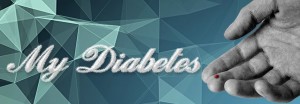My Diabetes Project – Skin complications
 Diabetes information and services in Europe
Diabetes information and services in Europe
 http://mydiabetes.eurohealth.ie
http://mydiabetes.eurohealth.ie
Itching can be caused by diabetes or related issues, like a yeast infection, dry skin, or poor circulation. If poor circulation is what’s causing the itching, you may find your lower legs to be the itchiest part of your body. You can take steps to help reduce the itching by limiting how often you bathe, using moisturizing soaps, and applying a lotion or cream after bathing.
- Bacterial infections, including styes (infections of the glands of the eyelids), boils, folliculitis (infection of the hair follicles), carbuncles (deep infections of the skin and the tissue underneath), and infections around the nails. You’ll know the tissue is probably infected if it becomes inflamed, hot, swollen, red, and painful. There are lots of different types of bacteria that can cause infections, but the most common is staphylococcus bacteria, usually called staph. These infections used to be life threatening, especially for people with diabetes, but today we have better antibiotics and methods of controlling our blood sugar. However, you are still more likely to develop a bacterial infection if you have diabetes, so make sure to practice good skin care and talk to you doctor at the first sign of a possible infection.
- Fungal infections, including jock itch, athlete’s foot, ringworm (a ring-shaped itchy patch), and vaginal infection. For people with diabetes, these infections are often caused by Candida albicans, a yeast-like fungus that creates itchy rashes of moist, red areas surrounded by tiny blisters and scales. You can usually find these infections in warm, moist folds of the skin, like under the breasts, around the nails, between fingers and toes, in the corners of the mouth, under the foreskin for uncircumcised men, and in the armpits and groin.
- Acanthosis nigricans is a condition where tan or brown raised areas appear on the sides of the neck, armpits, groin, and sometimes the hands, elbows, and knees. This is usually found in people who are very overweight, and losing weight is the best treatment. There are also some creams that can help the spots look better.
- Diabetic dermopathy results from changes in our small blood vessels, which can create light brown, scaly patches on the front of the legs that are usually oval or circular. They can look like age spots and do not hurt, open up, or itch. This is harmless and doesn’t need to be treated.
- Necrobiosis lipoidica diabeticorum (NLD) is also caused by changes in the small blood vessels and the spots are similar to diabetic dermopathy, but they are less of them, they are larger, and much deeper. First, NLD looks like a dull, red, raised area. Then, it looks like a shiny scar with a purple border, and can become itchy, painful, or the spots may crack open. While this condition is rare, adult women are the most likely to get it, and you only need to seek treatment from your doctor if the sores break open.
- Allergic reactions could be caused by any of your medications, including insulin or diabetes pills. Check the sites where you inject insulin for rashes, depressions, or bumps, and talk to your doctor if you think you’re having an allergic reaction.
- Diabetic blisters (bullosis diabeticorum) can occur on the backs of fingers, hands, toes, feet, and sometimes on our legs or forearms. They will look like burn blisters and usually occur in people who also have diabetic neuropathy. They may be large but are painless and have no redness around them, and will heal by themselves in about three weeks. The only way to treat these blisters is by better controlling your blood sugar levels.
- Eruptive xanthomatosis looks like firm, yellow, pea-sized bumps on the skin that has a red halo and may itch. The condition is usually found on the backs of hands, feet, arms, legs, and buttocks. Young men with type 1 diabetes are more likely to get this condition, and will usually have high levels of cholesterol and fat in their blood. Similar to diabetic blisters, the only way to treat this is by better controlling your blood sugar.
- Digital sclerosis looks like thick, tight, waxy skin on the backs of the hands and sometimes the toes and forehead. Finger joints will become stiff and no longer move as they should, and the knees, ankles, or elbows may also get stiff. About a third of people who have Type 1 diabetes will develop this condition and can only treat it by bringing blood sugar levels under control.
- Disseminated granuloma annulare shows up as defined ring- or arc-shaped raised areas on the skin and are usually found on the fingers or ears. These spots are generally red, brown, or skin-colored, and your doctor can prescribe medicine to help clear up this condition.